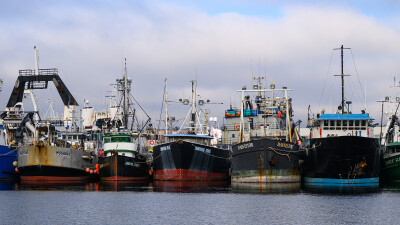The biggest year classes of Alaska fishermen are phasing out of the business and fewer young cohorts are recruiting in. The Alaska Young Fishermen’s Summit has convened for over a decade to help stanch that outward flow and facilitate a future for fishing leaders.
The average age of a commercial fisherman in Alaska was 50 in 2014 compared to 40 in 1980. At the same time, the number of Alaskans under 40 holding fishing permits fell to just 17 percent, down from nearly 40 percent of total permits across the state.
The summit coming up this year Anchorage, provides three days of fast paced networking and skill-building for newcomers to fishing and those considering the occupation as a career, although everyone from “graybeards to greenhorns” are welcome to attend.
“Age is secondary to what we are trying to accomplish and that is getting folks oriented to the whole suite of fisheries aspects from management to markets, as well as a real solid hit on looking critically at their business model,” said Torie Baker of Alaska Sea Grant in Cordova, which hosts the Summit.
“If you’re thinking about diversifying your operation or getting into another fishery or upgrading, we have a lot of great folks who come and help us with all aspects of the business parts of it,” said Baker.
Besides business, the summit focuses on Alaska’s role in world seafood markets, the latest science affecting fisheries and the regulatory process, which features a mock Board of Fisheries meeting.
“We actually assign roles and have folks get up there and practice public speaking, and we bring in people who play those roles in real life,” said Baker.
Networking with industry professionals and fishing peers is always one of the most popular Summit draws.
“People get totally new perspectives about fisheries across the state,” said Baker. “Just for salmon alone, there are 26 districts from Ketchikan to Kotzebue, and our longline fisheries are all over the place. It is an eye opener for these folks to get together, compare notes and challenges and aspirations.”
Fishermen’s concerns have changed over time, she said, and based on recent exit surveys, it is the environment that is now drawing the most interest.
“There is definitely a sensitivity in the oceanography and physical processes going on out there. That’s the source from which this all comes,” said Baker. “We’re working with hunter/gatherers who connect the dots every day in their lives and livelihood.”
The Alaska Young Fishermen’s Summit is set for December 6-8 at the Dena’ina Center. Cost is $125 for registrations before Dec. 1 ($150 after) and travel scholarships are available.







